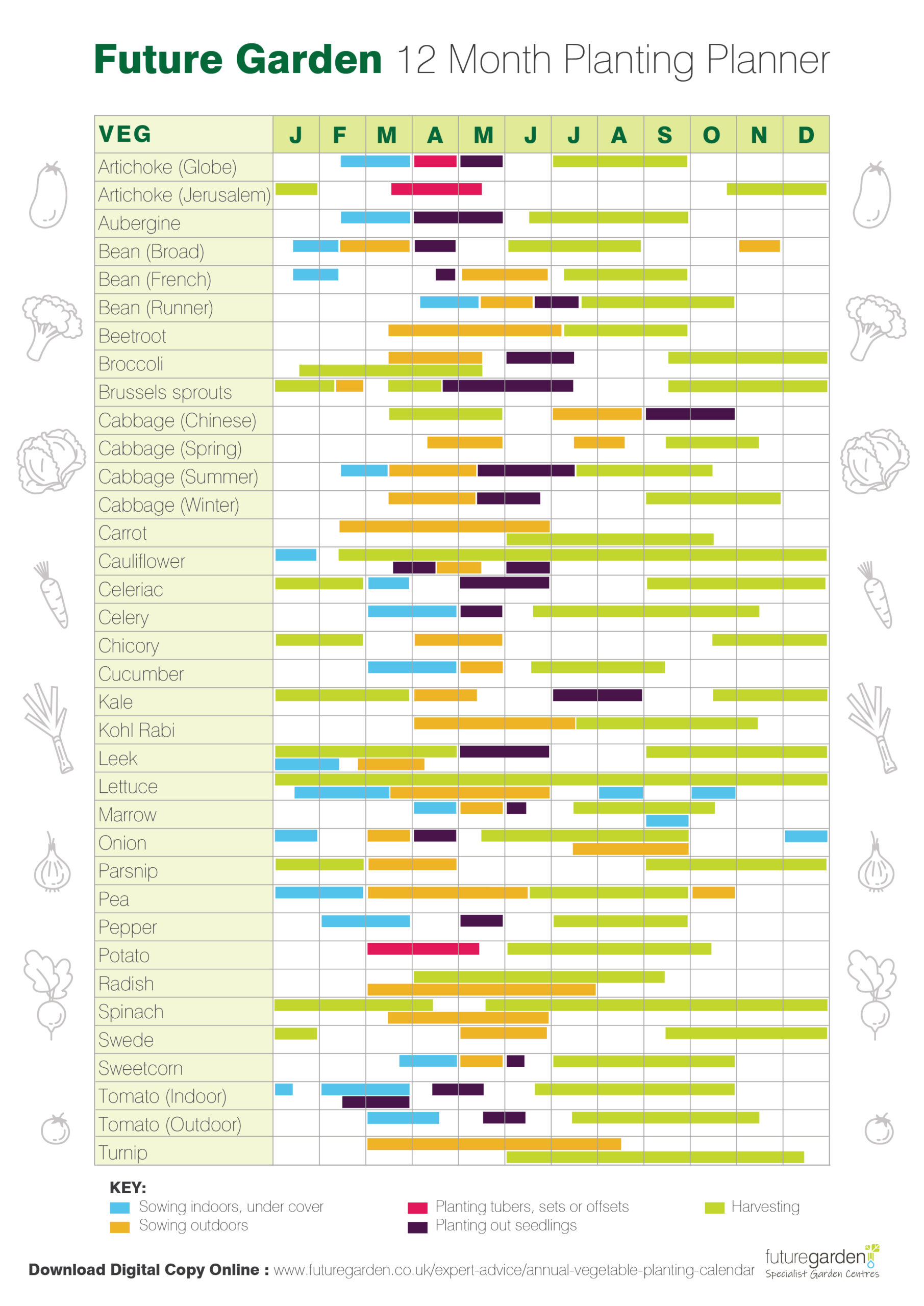Organic Veggie Planting Guide

Seasonal Planting Guide for Organic Vegetables
Growing your own organic vegetables is not just a rewarding hobby; it's a step towards sustainable gardening and healthier living. But when to plant what? That's where our seasonal planting guide for organic vegetables comes in handy. Let's dive right in!
Understanding Vegetable Growing Seasons
Before we start, it's crucial to understand that vegetable growing seasons vary depending on your location. So, the first step is to know your USDA Plant Hardiness Zone, which you can find on the USDA website. Once you've got that, you're ready to plan your organic garden!
Spring: A Fresh Start
Spring is the perfect time to kickstart your organic garden. As the weather warms up, the soil becomes ready for planting.
Cool-Season Crops
Spring is the time for cool-season crops. These are vegetables that thrive in cooler temperatures, typically between 60-70°F (15-21°C). Some popular cool-season organic vegetable varieties include:
- Lettuce
- Spinach
- Kale
- Radishes
- Peas
Warm-Season Crops
As the name suggests, warm-season crops prefer warmer temperatures. They grow best when the soil temperature is consistently above 60°F (15°C). Towards the end of spring, you can start planting warm-season crops like:
- Tomatoes
- Peppers
- Eggplants
- Cucumbers
Summer: Time to Thrive
Summer is when your organic garden should be in full swing. The long days and warm temperatures help plants grow quickly.
Heat-Loving Crops
Summer is the time for heat-loving crops. These plants thrive in high temperatures and plenty of sunshine. Some heat-loving organic vegetable varieties include:
- Sweet corn
- Okra
- Southern peas
- Watermelon
Succession Planting
Succession planting is one of the best organic gardening tips for maximizing your harvest. It involves planting a new crop immediately after an old one is harvested. In summer, you can succession plant quick-growing crops like:
- Bush beans
- Radishes
- Lettuce
Fall: The Second Spring
Fall is often referred to as the 'second spring' for gardeners. The cool temperatures return, and many crops thrive in these conditions.
Cool-Season Crops (Again!)
Remember the cool-season crops we talked about for spring? Many of them can also be planted in fall. In fact, some crops like spinach and kale taste even better when they've been kissed by frost.
Garlic: A Fall Favorite
Fall is also the time to plant garlic. Garlic is a hardy crop that can tolerate cold temperatures. It grows slowly over the winter and is ready to harvest in late spring or early summer.
Winter: Rest and Prepare
Winter might seem like a quiet time in the garden, but there's still plenty to do. It's the perfect time to prepare for the next growing season.
Cover Crops
Cover crops are one of the best sustainable gardening practices. They help improve soil health, prevent erosion, and suppress weeds. Some popular cover crops include:
- Clover
- Winter rye
- Hairy vetch
Planning Ahead
Winter is also the time to plan your garden for the next year. Decide what you want to grow, order seeds, and create a planting schedule. A great resource for this is the Farmer's Almanac Planting Calendar.
Organic Planting Calendar
To help you plan, here's a simple organic planting calendar:
- Early Spring: Lettuce, spinach, kale, radishes, peas, onions, potatoes
- Late Spring: Tomatoes, peppers, eggplants, cucumbers, beans, corn
- Summer: Okra, southern peas, watermelon, succession plantings of quick-growing crops
- Fall: Lettuce, spinach, kale, radishes, garlic, cover crops
- Winter: Cover crops, garden planning
Organic Gardening Tips
Here are a few more organic gardening tips to help you on your way:
- Feed the Soil: Organic gardening is all about feeding the soil, not the plant. Use plenty of compost and organic matter.
- Rotate Crops: Crop rotation helps prevent disease and maintains soil fertility.
- Mulch: Mulching helps retain moisture, suppress weeds, and regulate soil temperature.
Conclusion
Creating a thriving organic vegetable garden is a journey that follows the rhythm of the seasons. By understanding the vegetable growing seasons and following a seasonal planting guide for organic vegetables, you'll be well on your way to a bountiful harvest. Happy gardening!
FAQs
Q: What are the best vegetables to grow in spring? A: Some of the best vegetables to grow in spring are cool-season crops like lettuce, spinach, kale, radishes, and peas.
Q: Can I grow vegetables in winter? A: While most vegetables don't grow well in winter, it's a great time to plant cover crops and plan your garden for the next season.
Q: What is succession planting? A: Succession planting is a technique where you plant a new crop immediately after an old one is harvested. It helps maximize your harvest.
Q: Why is crop rotation important? A: Crop rotation helps prevent disease, maintains soil fertility, and improves soil structure.
Q: What are cover crops and why should I plant them? A: Cover crops are plants that improve soil health, prevent erosion, and suppress weeds. They're an important part of sustainable gardening.
0 Response to " Organic Veggie Planting Guide"
Post a Comment